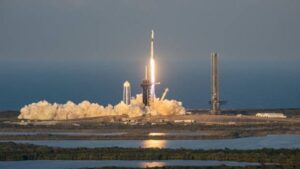Introduction
The International Space Station (ISS) is not just an outpost for astronauts but also a unique laboratory where scientific experiments are conducted under microgravity. Among the most surprising discoveries in recent years is the unexpected mutation of bacteria aboard the ISS. Scientists have found bacterial strains that have never been observed on Earth, raising both concerns and excitement about the potential implications for space travel and microbiology.
The Discovery
Researchers analyzing samples from the ISS discovered four bacterial strains belonging to the family Methylobacteriaceae. Three of these strains were entirely new to science. The bacteria were found in various locations aboard the space station, including the surface of the dining table and HEPA filters.
The presence of these microbes is not entirely unexpected. The ISS is home to many bacteria that hitch a ride on astronauts and supplies launched from Earth. However, what makes this discovery particularly intriguing is how these bacteria have mutated to adapt to the harsh conditions of space, including intense radiation, microgravity, and limited nutrients.
How Do Bacteria Mutate in Space?
Microgravity and cosmic radiation create an environment that differs vastly from Earth’s conditions. On Earth, bacteria evolve through natural selection, adapting to their surroundings over long periods. In space, however, mutations occur at an accelerated rate due to exposure to higher levels of radiation and unique stressors.
Some key factors influencing bacterial mutations aboard the ISS include:
- Microgravity: Changes in fluid dynamics and the lack of sedimentation impact bacterial growth and biofilm formation.
- Radiation: Cosmic rays cause genetic mutations that can lead to new bacterial traits.
- Isolation: The closed system of the ISS provides a unique microbial ecosystem where bacteria must adapt rapidly to survive.
What Makes These Space Bacteria Unique?
The newly discovered bacterial strains belong to the Methylobacterium genus, which is known for its ability to promote plant growth. This discovery is particularly exciting because it suggests that these bacteria might be useful for space farming—an essential step for long-duration missions to Mars or beyond.
Further genetic analysis of these microbes revealed that they possess genes that help them withstand extreme environments. Some of these adaptations include enhanced resistance to antibiotics and the ability to survive with minimal nutrients.
Potential Benefits of Mutated Bacteria
While mutated bacteria in space might sound alarming, not all mutations are harmful. In fact, many of these adaptations could be beneficial to humanity. Some potential applications include:
1. Space Agriculture
One of the biggest challenges in space travel is growing food in microgravity. The newly discovered bacteria could help plants thrive by fixing nitrogen, breaking down organic matter, and providing essential nutrients.
2. Biotechnology Advances
The unique genetic traits found in space bacteria could lead to breakthroughs in biotechnology, such as new antibiotics or bioengineered organisms that can survive in extreme conditions on Earth.
3. Improved Understanding of Evolution
Studying how bacteria evolve in space provides valuable insights into microbial adaptability and evolution. These findings could help researchers develop strategies to control bacterial growth in hospitals, spacecraft, and even on future Mars colonies.
Risks and Concerns
Despite their potential benefits, the presence of mutated bacteria in space is not without risks. Some of the major concerns include:
1. Increased Resistance to Antibiotics
Bacteria exposed to extreme conditions can develop resistance to antibiotics, making them harder to eliminate. This could pose a threat to astronaut health if harmful strains evolve resistance to available treatments.
2. Unpredictable Mutations
Mutations can lead to unexpected changes in bacterial behavior. While some mutations might be beneficial, others could create more virulent or aggressive strains.
3. Contamination of Other Planets
If humans eventually colonize Mars or other celestial bodies, space-traveling bacteria could pose a risk to potential extraterrestrial ecosystems. Scientists must carefully monitor microbial populations to prevent unintended contamination.
The Future of Space Microbiology
NASA and other space agencies are actively studying these space-mutated bacteria to understand their full potential. Future missions will likely involve even more extensive microbial research, including:
- Sending bacteria on deep-space missions to study how they adapt beyond Earth’s orbit.
- Developing countermeasures to prevent harmful mutations from affecting astronaut health.
- Harnessing beneficial bacteria to aid space farming and waste recycling.
Additionally, space agencies are exploring the potential of using bacteria for terraforming Mars. If certain microbial strains can be engineered to survive in Martian conditions, they might play a role in making the planet more hospitable for future human settlers.
Conclusion
The discovery of mutated bacteria aboard the ISS underscores the incredible adaptability of life. While these microbes have evolved in ways never seen on Earth, they offer both exciting opportunities and potential challenges for future space exploration. As we prepare for long-term missions to the Moon, Mars, and beyond, understanding and harnessing the power of these microscopic pioneers will be crucial for humanity’s success in space.







